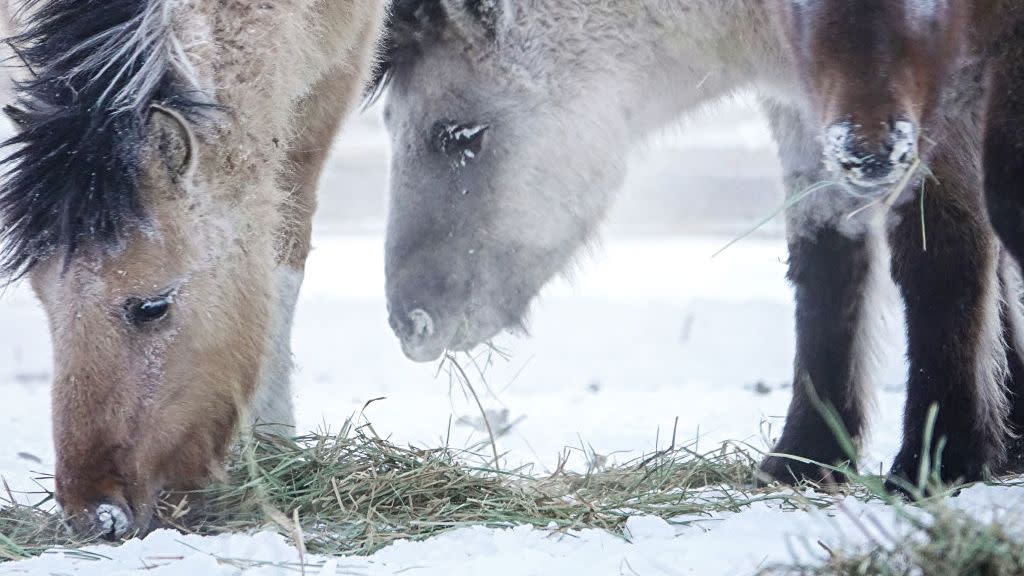The Horses of Siberia Are Rapidly Evolving, Study Suggests

Studies into the genetics of the Yakut horse breed from Northern Siberia reveal swift evolutionary changes favoring survival in intensely cold climates.
Renowned for their resilience, these diminutive equines thrive in some of Earth's most severe frigid environments.
To cope with the harsh conditions, Yakut horses have evolved to reduce their metabolic rates and decrease their core body temperatures.
The horses of the Yakut region in Northern Siberia have adopted a characteristic reminiscent of ... squirrels. A study shows the horses have acquired the capacity to slow their metabolism and reduce their body heat, entering a state akin to “standing hibernation,” in seemingly record time.
In the Arctic climate of Northern Siberia, temperatures can drop to -90 degrees Fahrenheit in the winter and stretch to a reasonably balmy average of 70 degrees Fahrenheit in the summer. But, perhaps unsurprisingly, it’s those extreme winters that have scientists fascinated with the Yakut breed.
A study published in Genes shows the Yakut horse is one of the oldest local breeds, formed in the far north of Yakutia several thousand years ago and traditionally used for meat, milk production, and riding. The “most cold-resistant indigenous breed,” it was developed under a “strong influence of natural selection,” the authors wrote in the Genes study.
And that comes as no surprise. An earlier study, published in PNAS, highlighted how these horses have adapted to the environment with body sizes, thick winter coats, and acute seasonal differences in metabolic activity—all in the name of minimizing heat loss.
What’s most striking is the Yakut has adapted at an entirely unexpectedly fast clip. “They represent one of the fastest cases of adaption to the extreme temperatures of the Arctic,” the authors wrote in the PNAS study.
One of the key traits of these horses is their ability to lower their metabolic rate, heart rate, and body temperature in the extreme cold—much like ground squirrels, and roughly a dozen other animals—to mimic hibernation states for hours on any given day. Because the horses remain active during their extended periods of torpor, scientist have dubbed the situation “standing hibernation.” This is the only known example of this ability in horses.
The PNAS study highlighted that the Yakutian horses’ contemporary population descends from domestic livestock, likely brought by early horse-riders who settled in the region a few centuries ago. “The metabolic, anatomical, and physiological adaptations of those horses therefore emerged on very short evolutionary time scales,” the authors wrote.
By completing the genomes of nine present-day Yakutian horses and two ancient specimens from roughly 5,200 years ago, and comparing those against genomes of two Late Pleistocene horses, the team concludes that the contemporary Yakutian horses don’t descend from the native horses that populated the region until the mid-Holocene. Rather, they were likely introduced following the migration of the Yakut people a few centuries ago.
That means the genes involved in hair development, body size, and metabolic and hormone signaling pathways that serve a key resource for Yakut horse adaptability all had to develop much more quickly than previously understood. The authors added that the ability of the Yakut horses to adapt to the extreme environments isn’t that unlike what they’ve found in native human populations and woolly mammoths, “suggesting that only a few evolutionary strategies are compatible with survival in extremely cold environments.”
You Might Also Like

